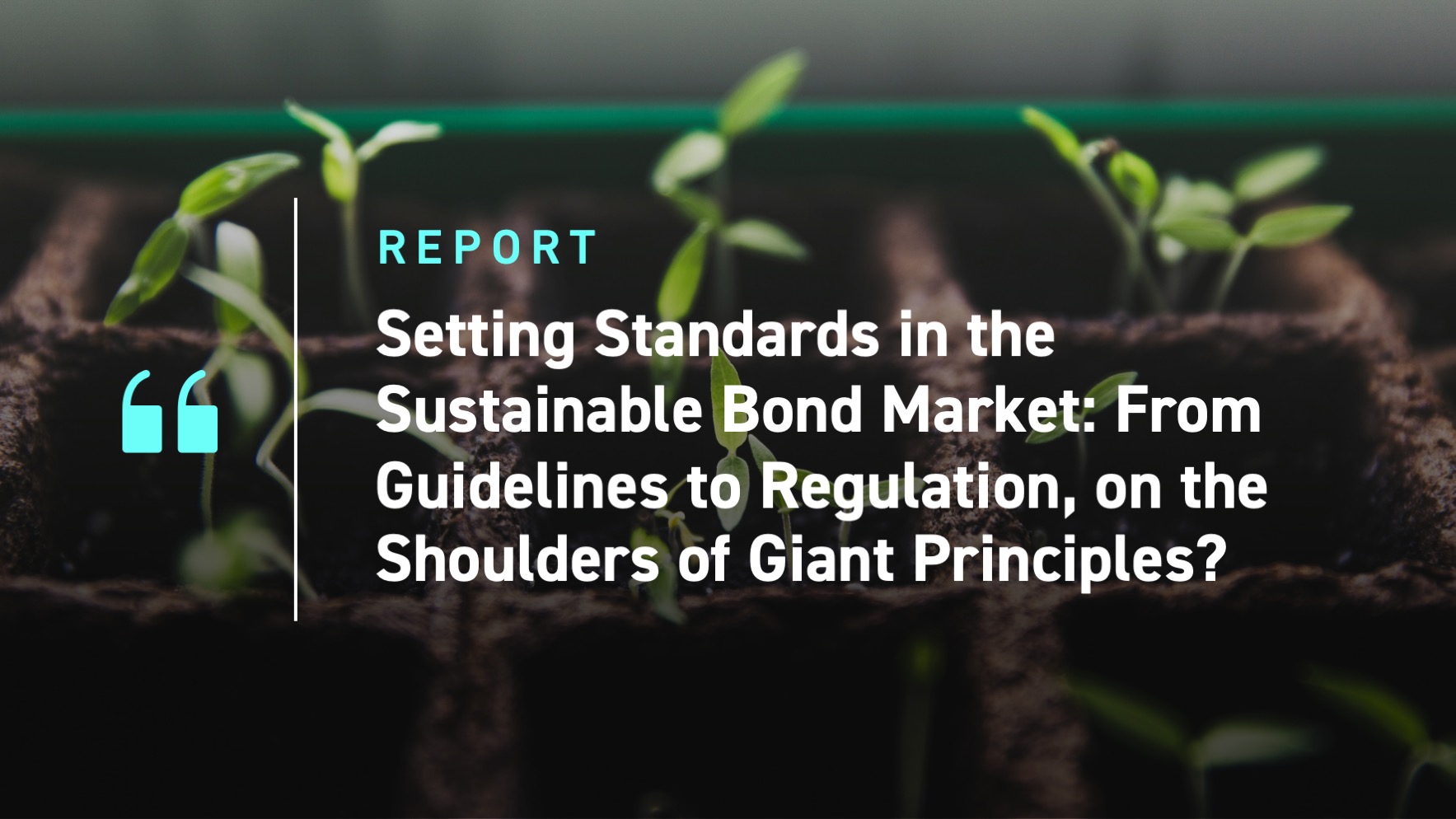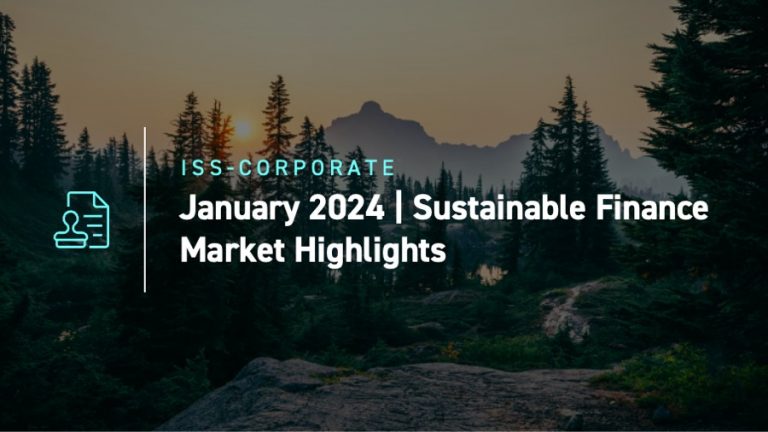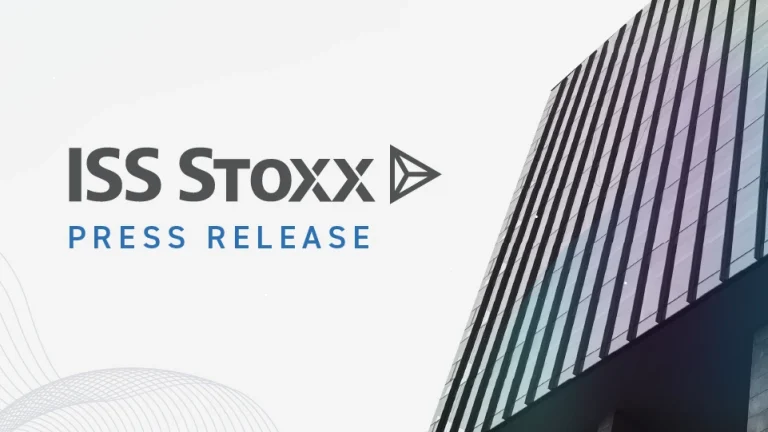Introduction
The sustainable bond market continues to be one of the main instruments to mobilize funds towards the achievement of environmental- and social-related investment objectives. The sustainable bond market reportedly has exceeded $4 trillion in issuances since the late 2000s, when the first examples of labelled bonds were brought to the market. This post examines relevant regulatory developments applicable to labelled fixed income instruments, focusing on jurisdictions that have shown meaningful evolution in recent times, and how these developments have been influenced by applicable international standards, such as the International Capital Market Association (ICMA) principles for labelled debt instruments.
India
The notion of green bonds has been part of India’s regulatory landscape since 2017, when the Securities and Exchange Board of India (SEBI) published a circular defining a green debt security (GDS) as a debt instrument issued for raising funds to finance certain environmentally beneficial projects. The circular included a list, largely inspired by the ICMA Green Bond Principles (GBP), with broad categories of such environmentally beneficial projects. The circular’s definition was later included in the Issue and Listing of Non-Convertible Securities (NCS) Regulations of 2021.
More recently, in February 2023, the SEBI issued an amendment to the NCS Regulations, expanding the definition of GDS to reflect the most recent updates to the list of eligible categories under the ICMA GBP and to harmonize them with local regulatory and political developments. For instance, the description of the “pollution prevention and control” category was complemented by a reference to the India Cooling Action Plan, launched by the Ministry of Environment, Forest and Climate Change, whereas in the case of the “circular economy” category, an explicit reference to adapted products, production technologies, and processes was included.
The February 2023 amendment to the NCS Regulations also introduced the notion of “blue bonds,” “yellow bonds,” and “transition bonds.” As defined in the regulation, blue bonds are GDS aimed at financing “sustainable water management” and “sustainable maritime” activities, whereas yellow bonds comprise funds raised for solar energy-related projects. The transition bonds label is reserved for issuances where the funds are to be utilized for “transitioning to a more sustainable form of operations, in line with India’s Nationally Determined Contributions.”
Unlike the ICMA GBP, which provide an indicative list of projects that may fall under the heading of a green bond, the list of eligible categories under NCS Regulations is exhaustive, meaning that projects not covered by the regulations will not be deemed eligible as GDS. Nevertheless, the SEBI has the option to add new categories to the list, from time to time.
Simultaneously, the SEBI provided additional instructions to issuers of GDS, including the requirement to appoint a third-party reviewer or certifier to assess the transaction at both the pre-issuance and post-issuance stages. Even though the SEBI’s instructions do not expressly address the type and depth of the assessment to be conducted by the third-party reviewer, a case could be made that aligning with any of the types of external reviews described in the ICMA Guidelines for Green, Social, Sustainability and Sustainability-Linked Bonds External Reviews – second-party opinions included — would satisfy the conditions set forth by the SEBI. The SEBI’s instructions have established a transition period for the obligation to appoint third-party reviewers for issuances of GDS, so that for the first two years, starting from April 1, 2023, this obligation applies on a “comply or explain” basis.
The scope of disclosure regulation has also been expanded pursuant to SEBI’s instructions. For instance, if the issuer refers to local or international standards, certifications, or taxonomies, information on how the issuance aligns with said standards, certifications, or taxonomies must be provided. Moreover, for issuances of transition bonds the issuers are required to provide details of the alignment between the use of proceeds and India’s Nationally Determined Contributions.
Interestingly, the SEBI has focused its regulatory initiatives on the field of green bonds, meaning that other labels, such as social bonds, have not been considered at this stage by the NCS Regulations or other relevant instructions. This situation may be explained by the fact that socially oriented projects may be subject to the regime of social stock exchanges (SSE), which provide for a market of equity instruments of socially oriented endeavors.
Along the same lines, no mention has been made of instruments such as sustainability-linked bonds (SLBs). However, considering the definition of GDS and the inclusion of transition bonds as one of its categories, an issuer could raise funds through an instrument qualifying as a GDS but adopting, at the same time, the structure of an SLB (these bonds have been recently labelled as hybrid bonds).
Japan
The Ministry of the Environment of Japan published its Green Bond Guidelines (the Guidelines) in 2017 as a means to incentivize the use of these instruments in the Japanese Market. From their inception, the Guidelines have been largely inspired by the ICMA GBP, to the extent that they follow the voluntary nature of the GBP and adopt a similar structure based on four core components: (i) use of proceeds, (ii) a process for project evaluation and selection, (iii) management of proceeds, and (iv) reporting.
In 2017, the Japanese regulators decided to take a best-efforts approach, meaning that as long as the issuance proceeds finance environmentally beneficial projects, the bonds could use the “green” label, even if some of the other conditions set forth in the Guidelines were not fully met. This position emphasized the importance of appropriate and sufficient disclosure, recommending issuers describe the extent to which their issuances complied with the Guidelines and allowing investors to make informed decisions as to whether to acquire bonds labelled as green. By proposing this approach, the Ministry believed “market discipline can be exercised to avoid greenwashing, while securing the diversity of issuers’ approaches.”
The 2017 Guidelines established a three-tiered intensity-based classification for the elements that green bonds are intended to have:
- Provisions qualified with the term “should” are the fundamental elements that instruments labelled as “green” are expected to have.
- Provisions qualified with the term “recommend” are elements considered to be positive factors that support claims to the green label, although it is acceptable if an issuance does not include them.
- Provisions qualified with the term “to be considered” are deemed possible characteristics of instruments labelled “green.”
In 2020, the Ministry of the Environment published an update to the Guidelines (the 2020 Update) to reflect the latest amendments to the GBP and the inclusion of a Guidance Handbook by ICMA. The 2020 Update also acknowledged the concept of Sustainability Bonds (i.e., instruments issued to finance a combination of both environmental and social projects) and referred to the establishment of the Sustainability Bond Guidelines by ICMA. Finally, the 2020 Update introduced a new set of guidelines applicable to green loans and sustainability-linked bonds in the Japanese market, which expanded the scope of the guidance initially intended for green bonds.
In general terms, the 2020 Update maintained the spirit of the 2017 Guidelines by reinforcing its voluntary nature and the fact that issuers are expected to adhere to their provisions on a best-efforts basis and by retaining the three-tiered intensity-based classification, as described above.
The 2020 revision of the Guidelines also expressed the Ministry’s views on the role and importance of transition bonds as contributing instruments to the transition to a decarbonized society. These views were further developed with the publication of the Basic Guidelines on Climate Transition Finance (BGCTF) in May 2021 by the Financial Services Agency, the Ministry of the Environment, and the Japanese Ministry of Economy, Trade and Industry (METI).
With the BGCTF, the Japanese authorities have expressed their intention to strengthen the position of transition finance in hard-to-abate sectors and to direct funding towards the achievement of Japan’s 2050 carbon-neutral goals, while ensuring that transactions using the transition finance label are credible. Here too, the Japanese government has drawn inspiration from the frameworks devised by ICMA, specifically, the ICMA’s Climate Transition Finance Handbook (the ICMA Handbook) published in 2020. In fact, the BGCTF expressly indicates its purpose of pursuing alignment with the ICMA Handbook.
Per the BGCTF, transition finance in the debt market can take the form of either use-of-proceeds instruments or SLBs, as long as the issuer observes the following four disclosure requirements, drawn from the ICMA Handbook:
- Strategy and governance for the issuer’s climate transition
- Business model that includes environmental materiality
- Climate transition strategy that is “science-based” and includes targets and pathways
- Transparency about implementation
Going beyond the provisions in the ICMA Handbook, the BGCTF complements these disclosure requirements by following the same three-tiered approach prescribed in the Guidelines (i.e., the BGCTF describes the approach to each of the four disclosure requirements using the expressions “should,” “recommend,” and “to be considered”). To conclude, the BGCTF reiterates the ability of both use-of-proceeds and general-corporate-purpose instruments (the latter in the shape of SLBs) to promote long-term, strategic GHG emissions reduction, as part of a comprehensive decarbonization strategy.
China
The China Green Bond Standards Committee issued the China Green Bond Principles (the China GBP) in July 2022, marking the latest step in the country’s green bond standards evolution, a path that began in 2015 with the issuance of the green bond guidelines by the People’s Bank of China (PBOC).
Due to the structure of the regulatory landscape in China, several authorities have had the authority to set standards applicable to debt issuance. In that environment, different regulators have proposed individual definitions of a green bond, as well as diverse lists of eligible categories and varying thresholds of the percentage of proceeds that should be allocated to environmentally beneficial projects.
For example, in 2015 the National Development and Reform Commission (NDRC) authorized issuers of green bonds to use up to 50% of bond proceeds to fund general corporate expenditures, whereas the Shanghai Stock Exchange defined, in 2017, that a bond could be labelled as “green” if 70% or more of the proceeds were to finance environmental projects. Similarly, divergences in the definition of green bonds meant that, for some authorities, coal projects were an eligible category, while for others they did not meet the threshold.
In response to these variations, the China Green Bond Standards Committee was established as a collaboration among PBOC, the National Association of Financial Market Institutional Investors (NAFMII), and the China Securities Regulatory Commission (CSRC), with the goal of harmonizing the different standards and achieving a closer alignment to internationally accepted standards, namely the ICMA GBP.
Like the approach taken by the other jurisdictions described above, the China GBP follows the structure and concept of the ICMA GBP. In particular, ICMA’s 100% use-of-proceeds approach (i.e., the requirement that 100% of proceeds should be allocated to green projects) has been included as a requirement for issuances in alignment with the China GBP, as well as the adoption of the four core components of the ICMA GBP. For the list of categories of acceptable use-of-proceeds projects, the China GBP refers to the Green Bond Endorsed Projects Catalogue (2021), a classification developed by the National Development and Reform Commission (NDRC), the PBOC, and the CSRC with the purpose of consolidating the definitions proposed by different governmental agencies. In the case of international issuances, the principles indicate that the use-of-proceeds categories can be based on the Common Ground Taxonomy or the EU Taxonomy.
However, in a departure from the ICMA GBP, the China GBP does not recommend appointing an external reviewer to conduct an independent assessment on the pre-issuance or post-issuance disclosures. When addressing the subject of reporting, the China GBP indicates only that issuers are encouraged to disclose any external review reports that they might have had prepared by third-party evaluation and certification agencies.
European Union
The goal of establishing a European standard for green bonds has been part of the EU’s regulatory agenda since 2020, when the European Commission (the Commission) published a communication on the Sustainable Europe Investment Plan as a pillar of the European Green Deal.
The Commission’s intent was formalized in July 2021 with the publication of the legislative proposal for a voluntary European Green Bond Standard (EUGBS). Compliance with the EUGBS depended on issuers meeting the proposal’s strict requirements, which included the following:
- Full alignment with the EU Taxonomy
- Transparency on proceeds allocation during the lifetime of the issuance
- External review requirement for all issuances aligned with the EUGBS
- Supervision by the European Securities Markets Authority (ESMA) of external reviewers providing services to bond issuers
The EUGBS also requires issuers to publish a pre-issuance green bond factsheet that provides relevant information on the issuance, following templates included as an annex to the regulation. The additional disclosure obligations and the standardization pursued by the regulation may imply a change in the current market approach, which involves the publication of financing frameworks containing the disclosures required or recommended by applicable standards (such as the ICMA Principles).
After consideration of the Commission’s legislative proposal by the European Parliament and the Council of the EU, a political agreement between the three institutions was reached in February 2023. Upon adoption of the final text, expected to occur in Fall 2023, the regulation will enter into force 12 months after its publication in the Official Journal of the European Union.
From what has been communicated by the European institutions, the main differences between the Commission’s proposal and the final text is that the EU Taxonomy alignment requirement has been limited to 85% of the issuance’s proceeds. This means that an issuer intended to qualify for the EUGBS has a flexibility cushion of 15% of the proceeds that can be used for sectors not yet covered by the EU Taxonomy.
In general, the EU’s approach marks a departure from the approach taken by other countries that have adopted standards based on the ICMA Principles. Certain characteristics of the ICMA Principles, such as flexibility in the eligible use-of-proceeds categories; external reviews being recommended rather than required; and the liberty granted to issuers to define the form, extent, and depth of pre- and post-issuance reporting have been seen as important incentives for issuers to align with them and follow current global market practices. With the EUGBS, however, the EU is presenting a more challenging standard for issuers. Time will tell if the EUGBS approach leads to increased public and private finance for sustainable investments.
Conclusion
Most of the regulatory developments mentioned in this post have been built upon the foundation set by the ICMA Principles. The common foundation shows both the ICMA principles’ global reach, as they have emerged as the go-to framework for labelled bond issuances, and their usability as a baseline that allows local and regional regulators to develop, in some cases, more stringent requirements meant to go beyond the principles’ voluntary nature. A question up for discussion is whether the EUGBS, with its goal to become the most stringent standard, is an exception to the rule of regulators building on the ICMA Principles or an evolution of that process. To grant the label, the EU requests issuers to go one step beyond the principles and show greater efforts in some of ICMA’s core aspects: availability of eligible use-of-proceeds categories, reporting requirements, and mandatory engagement of an external reviewer.
A common characteristic of the jurisdictions described in this post is their focus on green bonds, a fact that can be attributed to the maturity of the green bond market, compared to other types of labelled debt instruments, and to the relevance of green bonds as a means to finance national and regional climate action plans, in pursuit of the goals set by international instruments such as the Paris Agreement.
However, emerging instruments aimed at financing social projects (either in the form of social or sustainability bonds) still await definition by regulators and standard-setting authorities of eligible categories, target populations, and additional reporting obligations. Some of these matters have been addressed by the ICMA Social Bond Principles (SBP), so it is possible that certain local regulators will want to follow a similar path and develop frameworks built on the grounds of the SBP.
Open questions remain on matters such as the regulation of SLBs – in the case of both corporate and sovereign issuers – and the proposal of additional guidelines on the applicability of the “transition” label, especially in regard to issues such as potential risks of greenwashing through the label’s use. For instance, in the U.K., the Financial Conduct Agency (FCA) recently expressed concerns about the current status of sustainability-linked instruments, especially as topics such as uniform disclosure and independent monitoring and verification of targets have not been sufficiently addressed. Even though the FCA indicated that there are no current plans to introduce regulatory standards or a code of conduct applicable to SLBs and other similar types of instruments, future regulatory developments may come if the market does not show a positive evolution.
Regarding the issuance of transition-labelled instruments, it is important to note that two of the larger markets for corporate- and sovereign-labelled bonds (Japan and India) have already included this category in their green bond guidelines and endorsed transition bonds as instruments to contribute to the achievement of decarbonization goals. As a result, the coming months could show a proliferation of transition-labelled transactions. In such a situation, local regulators may set the grounds upon which international principles applicable to transition bonds can be built. The process of mutual reinforcement could encourage sustainable debt transactions globally while ensuring that funding is allocated to impactful projects.
Explore ISS ESG solutions mentioned in this report:
- Financial market participants across the world face increasing transparency and disclosure requirements regarding their investments and investment decision-making processes. Let the deep and long-standing expertise of the ISS ESG Regulatory Solutions team help you navigate the complexities of global ESG regulations.
- Identify ESG risks and seize investment opportunities with the ISS ESG Corporate Rating.
- Assess companies’ adherence to international norms on human rights, labor standards, environmental protection and anti-corruption using ISS ESG Norm-Based Research.
By: Héctor Páez, ESG Methodology Lead – Fixed Income, ISS ESG




